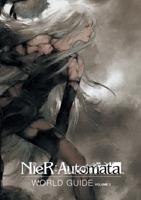Publisher's Synopsis
The life-size, adolescent-girl dolls created by German artist Hans Bellmer in the 1930s are the subject of Therese Lichtenstein's highly original book. Disturbing and controversial, Bellmer's dollswith their uncanny, fragmented bodies and eroticized poseswere just as shocking during Bellmer's time as they are today. Until now there has been little available in English about Bellmer's dolls, and Lichtenstein's book will be welcomed for its fresh interpretation of the artist's work and his place in European modernism. Eighty striking photographs accompany the text.
Working during a time when Nazism was on the rise, Bellmer created several dolls with fragmented bodies that could be dismantled and arranged in various configurations. Using a narrative format, he then photographed the dolls in a range of grotesqueoften sexualpositions. The images he conveyed were of death and decay, abuse and longing, in stark contrast to Nazism's mythic utopian celebration of adolescence.
Lichtenstein interprets Bellmer's complex expressions of eroticism as a protest against the Nazis and also against his father, a cold and repressive Nazi sympathizer. At the same time, she says, by hyperbolically flaunting a passive femininity in a theatrical manner, Bellmer's images allow us to consider how cultural representations can affect the formation of identity and alternative possibilities.
Working during a time when Nazism was on the rise, Bellmer created several dolls with fragmented bodies that could be dismantled and arranged in various configurations. Using a narrative format, he then photographed the dolls in a range of grotesqueoften sexualpositions. The images he conveyed were of death and decay, abuse and longing, in stark contrast to Nazism's mythic utopian celebration of adolescence.
Lichtenstein interprets Bellmer's complex expressions of eroticism as a protest against the Nazis and also against his father, a cold and repressive Nazi sympathizer. At the same time, she says, by hyperbolically flaunting a passive femininity in a theatrical manner, Bellmer's images allow us to consider how cultural representations can affect the formation of identity and alternative possibilities.










